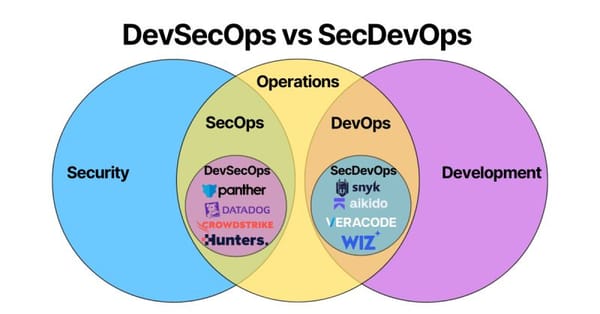The Foundation of the Problem: API Sprawl and Blind Spots

One of the biggest weaknesses in current API security practices is the inability to maintain accurate API inventories and monitor their usage effectively. Many organizations monitor their APIs less than daily (58%), and only a small fraction (20%) have achieved real-time monitoring, leaving a significant blind spot. This creates "API sprawl," where undocumented or "shadow APIs" and decommissioned but still active "zombie APIs" become common targets because security teams don't even know they exist. Half of organizations rely on developer documentation to identify APIs exposing sensitive data, which is prone to error and incompleteness, with only 15% expressing strong confidence in their API inventory's accuracy.
Understanding Common Attack Vectors
Attackers frequently exploit well-known vulnerabilities, with 80% of attack attempts aligning with the OWASP API Security Top Ten. This means that by familiarizing yourself with these common weaknesses, you can effectively assess many API security postures.
Here are some of the most prevalent security challenges in production APIs:
- Vulnerabilities (e.g., misconfigurations, broken object-level authorization): These account for 37% of issues and can stem from insufficient testing or rushed deployments.
- Security Misconfigurations (OWASP API8): This is the most exploited vulnerability, accounting for 54% of attacks. Weak configurations, excessive permissions, or exposed sensitive data are common culprits.
- Broken Object-Level Authorization (OWASP API1): This contributes to 27% of attacks, where attackers access unauthorized resources due to flawed access controls.
- Sensitive Data Exposure/Privacy Incidents: Account for 34% of issues, often due to misconfiguration or poor governance over APIs handling sensitive data.
- Authentication Problems (e.g., weak access controls, improper session management): Responsible for 29% of issues. Importantly, 95% of attacks originate from authenticated users, highlighting the risk of compromised accounts and insider threats. External-facing APIs are the primary target, with 98% of attack attempts against them.
- Lack of Resources & Rate Limiting (OWASP API4): Insufficient rate limiting can leave APIs susceptible to denial-of-service (DoS) attacks or data scraping, causing system overwhelm and breaching service level agreements (SLAs).

The Microservices Multiplier
The adoption of microservices, while beneficial for development, increases the attack surface due to a higher number of endpoints, APIs, and services. This leads to complexity in management and addressing security gaps. Key vulnerabilities in microservices environments include:
- API gateway misconfigurations: This can involve weak authentication/authorization policies, improper rate limiting/IP filtering, or insufficient Cross-Origin Resource Sharing (CORS) management.
- Service mesh vulnerabilities: Such as misconfigured security policies (e.g., exposing internal APIs externally), insecure service-to-service authentication, and weak data encryption in transit. Insecure service-to-service communication can lead to data leakage or man-in-the-middle (MitM) attacks.
Emerging Threats: Generative AI (GenAI)
The rise of GenAI introduces a new dimension of security risks. One-third of respondents lack confidence in detecting AI-driven attacks. There are also concerns about the security and quality of AI-generated code (31%), securing it (47%), and the potential for new vulnerabilities introduced by these outputs (40%). This highlights a growing need for specialized tools and training. The global shortage of cybersecurity professionals, around 4 million unfulfilled positions, further emphasizes the need for AI in API security, as it is a newer subdiscipline lacking systematic formal education.

Underlying Gaps in Security Practices
Beyond specific vulnerabilities, systemic weaknesses contribute to API security challenges:
- Insufficient Monitoring: Only 20% of organizations monitor their APIs in real-time, leaving the majority vulnerable to delayed threat detection.
- Resource Constraints: Many organizations cite limited funds (30%), personnel shortages (22%), and a lack of proper security tools (10%) as major obstacles.
- Immature Security Strategies: A significant portion (59%) of organizations are still in the planning or basic stages of their API security strategies, with only 6% reporting advanced programs. Only 10% currently have an API posture governance strategy in place, though 43% plan to implement one within the next 12 months.
- Inconsistent Adherence to Frameworks: While frameworks like PCI DSS (44%) and NIST (38%) are adopted, only 34% align with the OWASP API Security Top Ten guidelines.
- Fundamental Security Gaps: This includes a lack of TLS (Transport Layer Security) protection, which allows sensitive information to be intercepted. Poor API key management, where keys are accidentally committed to public repositories or grant overly broad access, is also a concern. Organizations also tend to add too much authorization logic to middleware, leading to duplication and inefficiency.

Tips for Assessing API Security (for the Hackernoob)
To effectively assess API security weaknesses, think like an attacker by understanding these common gaps:
- Start with Discovery: You can't secure what you don't know. Look for undocumented ("shadow") or decommissioned but still active ("zombie") APIs. These are low-hanging fruit for attackers. AI systems can help in discovering unknown APIs, identifying forgotten endpoints, and managing API inventory.
- Focus on the OWASP API Security Top Ten: This is your roadmap. Prioritize checking for:
- Broken Object-Level Authorization (API1): Can you access or modify another user's data by simply changing an ID in the URL or request body? This accounts for 27% of attacks.
- Security Misconfigurations (API8): Look for default settings, exposed error messages, unnecessary features, or overly permissive configurations in API gateways. This is the most exploited vulnerability, at 54% of attacks.
- Sensitive Data Exposure (API3): Are APIs returning more data than necessary, or sensitive information that shouldn't be publicly accessible? This is a concern in 34% of issues.
- Broken Authentication (API2): Can you bypass login, perform credential stuffing, or exploit weak session management? Authentication problems account for 29% of issues, and 95% of attacks originate from authenticated users.
- Lack of Resources & Rate Limiting (API4): Can you send a massive number of requests to overwhelm the server or scrape data without being blocked? Look for intelligent rate limiting mechanisms.
- Evaluate Authentication and Authorization:
- TLS (HTTPS): Always verify that TLS is enforced (the URL starts with
https://) to protect data in transit. - OAuth2 and OpenID Connect: Prefer using OpenID Connect built on OAuth2 for user authentication, as it simplifies managing user accounts and multi-factor authentication.
- API Key Management: If API keys are used, assess if they are scoped to specific functionalities or if they grant broad access. Check for accidental exposure in public code repositories, and encourage users to store them securely using environment variables, not local storage. Ensure keys can be deleted or regenerated.
- Multi-Factor Authentication (MFA): Look for its implementation, especially for API keys or critical operations.
- Authorization Logic: Is access control properly implemented, adhering to the principle of least privilege (users only have the minimum access needed)?. Be wary if too much authorization logic is in middleware, as it can be duplicated and inefficient; instead, leave complex authorization to the application's business logic.
- TLS (HTTPS): Always verify that TLS is enforced (the URL starts with
- Test for Rate Limiting (API4): Can you send a massive number of requests to overwhelm the server or scrape data without being blocked? Look for intelligent rate limiting mechanisms, including source-based controls, IP reputation scoring, and machine learning for abuse pattern detection.
- Examine Microservices Components:
- API Gateways: Check for misconfigurations like weak authentication/authorization policies, improper rate limiting/IP filtering, or insufficient CORS management.
- Service Mesh: Look for misconfigured security policies (e.g., internal APIs exposed externally), insecure service-to-service authentication (ensure mTLS is used for two-way authentication between services), or weak data encryption in transit (using modern algorithms like AES, ChaCha20).
- Consider AI Integration (if applicable): If GenAI is used in API development, be aware of the potential for vulnerabilities in AI-generated code (40%) and the organization's confidence in detecting AI-driven attacks (lack of confidence in detecting AI-driven attacks for one-third of respondents). Look for mitigation strategies like developer training, code reviews, security testing, and governance frameworks.
- Assess Monitoring and Logging: Is there real-time monitoring in place? Only 20% of organizations monitor continuously in real-time. Are detailed usage logs captured and reviewed? Insufficient logging and monitoring can delay detection of incidents. Look for anomaly detection capabilities like monitoring unusual IP addresses, failed login attempts, or abnormal request payloads.
By systematically checking these areas, you can gain a strong understanding of an organization's API security posture and identify critical weaknesses. Remember, a proactive and comprehensive security strategy, combined with continuous monitoring and adherence to established frameworks, is key to safeguarding APIs.








